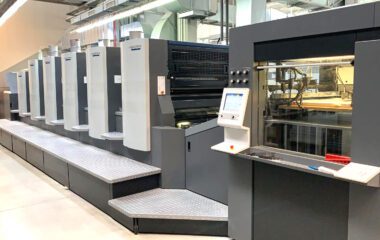
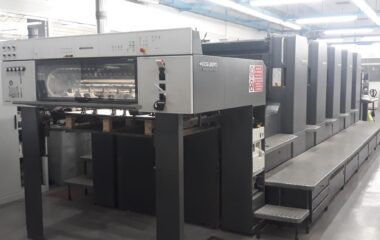




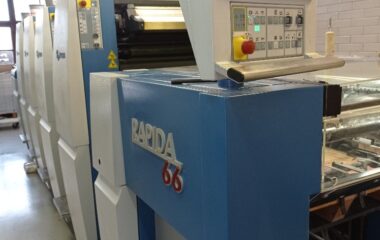













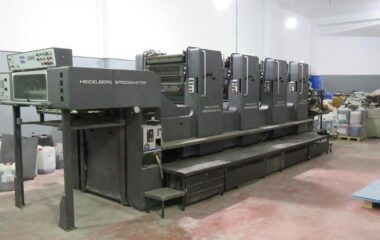


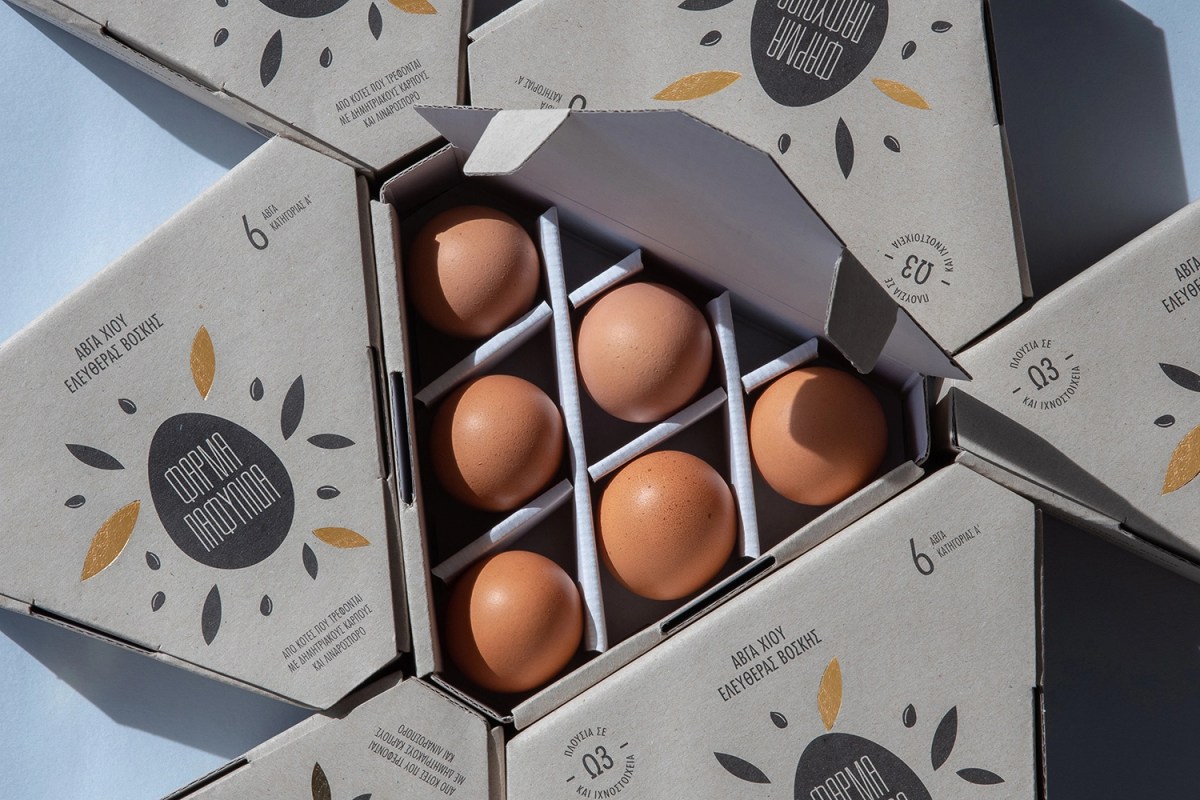

1. Rotary or Flat Bed Die Cuts
The main method or standard means of die cutting involves the use of metal dies to give paper or substrate products specific shapes or designs that cannot be accomplished by a straight cut on a web press or a guillotine cutter. By using knife-edge cutting blades formed into a pattern or die, a machine presses the die into the material to produce the desired shape. Almost any shape can be created and applied to a diverse array of raw
materials. Labels, envelopes, folders, cartons, and documents are only a few of the many printed products that can be die cut for added functionality.
Web presses often have a rotary die unit that is utilized for die cutting paper and label stocks. Although there are limitations on the types of dies and the paper selections that can be provided, rotary die cutting serves as an effective method for longer run quantities of printed materials requiring some type of die cut area.
Single sheet products require the use of a flat bed die and a flat bed cutting press to die cut the shape into the paper stock. The speed of this process is slower than a web press, but it does provide die cutting capabilities to a wider variety of paper stocks and printed products.
2. Laser Engraving
A second method of die cutting, which has been developed in recent years, is called laser engraving. By using a computer-controlled beam of light to cut through the material, text and images can be accurately reproduced on a variety of paper stocks. By using a laser, manufacturers can provide an exceptionally high quality, well-detailed and fine-lined reproduction of intricate art and images or corporate logos.
The laser can create die cuts that have cut away areas which are very small in size, unlike a rotary or flat bed die cut which encounters difficulty in having a die made for small cut areas and further, has difficulty in stripping away the paper from the small cut out areas.
A laser engraved die cut can be created to reproduce a 800 dpi (dots per inch) image allowing for a cut impression with a significant amount of clarity and definition.
3. Perf Cutting or Perforating
An alternative to die cutting that is sometimes used is perf cutting or perforating. Perforations or “perfs” are generally classified for print specifications in one of two ways:
1) bursting strength or 2) TPI, which is commonly called either “Ties Per Inch” or “Teeth Per Inch”.
a. Burst and Tear Strength
Burst strength is a measurement of the pressure (as measured on a burst strength gauge) that is required to detach the perforated section of a document. Tear strength is the
physical effort necessary for removal of the perforated section. Tear strength can be categorized as “light release” which is easily torn, “medium release” which gives
moderate resistance to removal, or “stiff release” which provides the greatest resistance from repeated handling and attempted removal.
The purpose and function of the perforated section often determines whether the perforation is to be an easy release variety (3 to 6 TPI) or a stiffer release (10 to 18 TPI).
The weight of the stock combined with the TPI will also affect the burst strength.
b. Ties Per Inch (TPI)
Teeth per inch or ties per inch are both approximately the same count, but not the same dimensions. The tie or tab is the part of the perforation where the paper does not get cut,
but remains intact to “tie” the paper together. The ties, or uncut areas, alternate with cut areas to form the perforation. The tied areas of the perforation are usually shorter in width
than the cut areas in order to allow for easier detachment of the sections separated by the perforation.
c. Application Methods
Products Printed and Perforated Online (Web Presses)
When a perforation must be applied parallel to the direction that the paper travels through the printing press, a steel segmented wheel is used. The segmented wheel rolls along the paper and applies the required cuts per inch as the paper is pulled through the press.
Multiple perforations can be applied at the same time. For perforations that must be perpendicular to the direction the paper travels through the printing press, steel perforation rules are used, which are inserted into cylinders on the press. As the cylinders revolve, the perforations are cut into the paper. More than one perpendicular perforation may be applied at one time, but the print supplier may be much more limited in the number and position of perpendicular perfs that can be applied at one time as compared to the number and positions of parallel perforations. Both parallel and perpendicular perforations can be applied at the same time



Suspendisse aliquam finibus fringilla. Sed interd imperdiet. Morbi nec velit ut nunc posuere dapibus vel ut odio.



Suspendisse aliquam finibus fringilla. Sed interd imperdiet. Morbi nec velit ut nunc posuere dapibus vel ut odio.